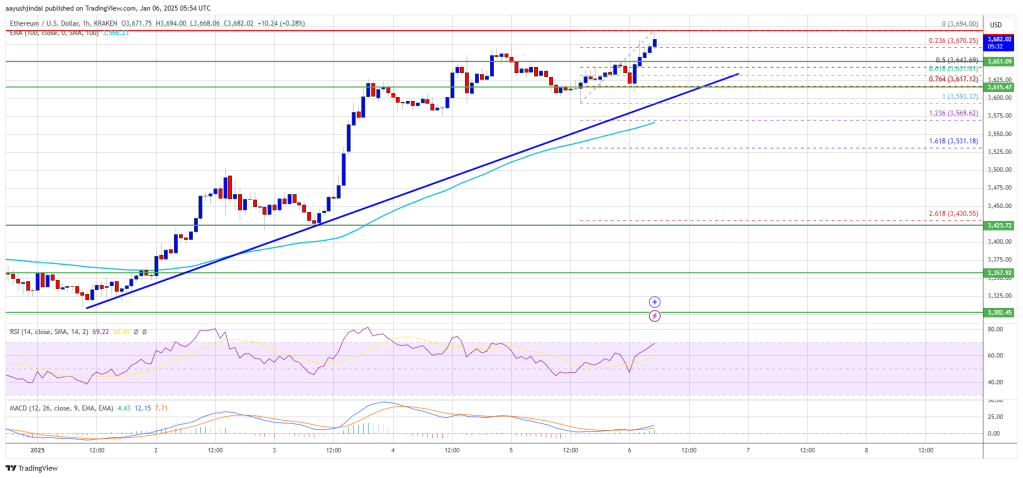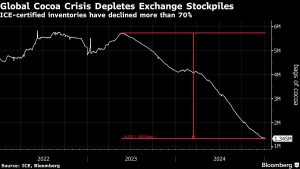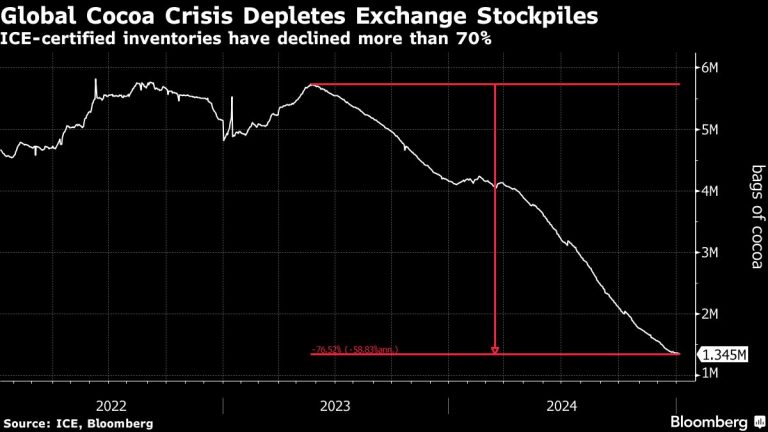Ethereum price started a fresh recovery wave above the $3,550 zone. ETH is consolidating and aims for a fresh increase above the $3,700 resistance.
- Ethereum started a decent recovery wave above the $3,550 zone.
- The price is trading above $3,620 and the 100-hourly Simple Moving Average.
- There is a connecting bullish trend line forming with support at $3,620 on the hourly chart of ETH/USD (data feed via Kraken).
- The pair could gain bullish momentum if it clears the $3,700 resistance level.
Ethereum Price Climbs Above $3,650
Ethereum price remained stable above the $3,420 level and extended its recovery wave like Bitcoin. ETH gained pace for a move above the $3,550 and $3,620 resistance levels.
The bulls were able to surpass the $3,650 resistance level. It opened the doors for a move toward the $3,700 level. A high was formed at $3,694 and the price is now consolidating gains above the 23.6% Fib retracement level of the upward move from the $3,569 swing low to the $3,694 high.
Ethereum price is now trading above $3,650 and the 100-hourly Simple Moving Average. There is also a connecting bullish trend line forming with support at $3,620 on the hourly chart of ETH/USD. The trend line is close to the 76.4% Fib retracement level of the upward move from the $3,569 swing low to the $3,694 high.
On the upside, the price seems to be facing hurdles near the $3,700 level. The first major resistance is near the $3,720 level. The main resistance is now forming near $3,800. A clear move above the $3,800 resistance might send the price toward the $3,880 resistance.

An upside break above the $3,880 resistance might call for more gains in the coming sessions. In the stated case, Ether could rise toward the $3,920 resistance zone or even $4,000 in the near term.
Another Decline In ETH?
If Ethereum fails to clear the $3,700 resistance, it could start another decline. Initial support on the downside is near the $3,620 level and the trend line. The first major support sits near the $3,550.
A clear move below the $3,550 support might push the price toward the $3,500 support. Any more losses might send the price toward the $3,420 support level in the near term. The next key support sits at $3,350.
Technical Indicators
Hourly MACD – The MACD for ETH/USD is gaining momentum in the bullish zone.
Hourly RSI – The RSI for ETH/USD is now above the 50 zone.
Major Support Level – $3,620
Major Resistance Level – $3,700

























+ There are no comments
Add yours